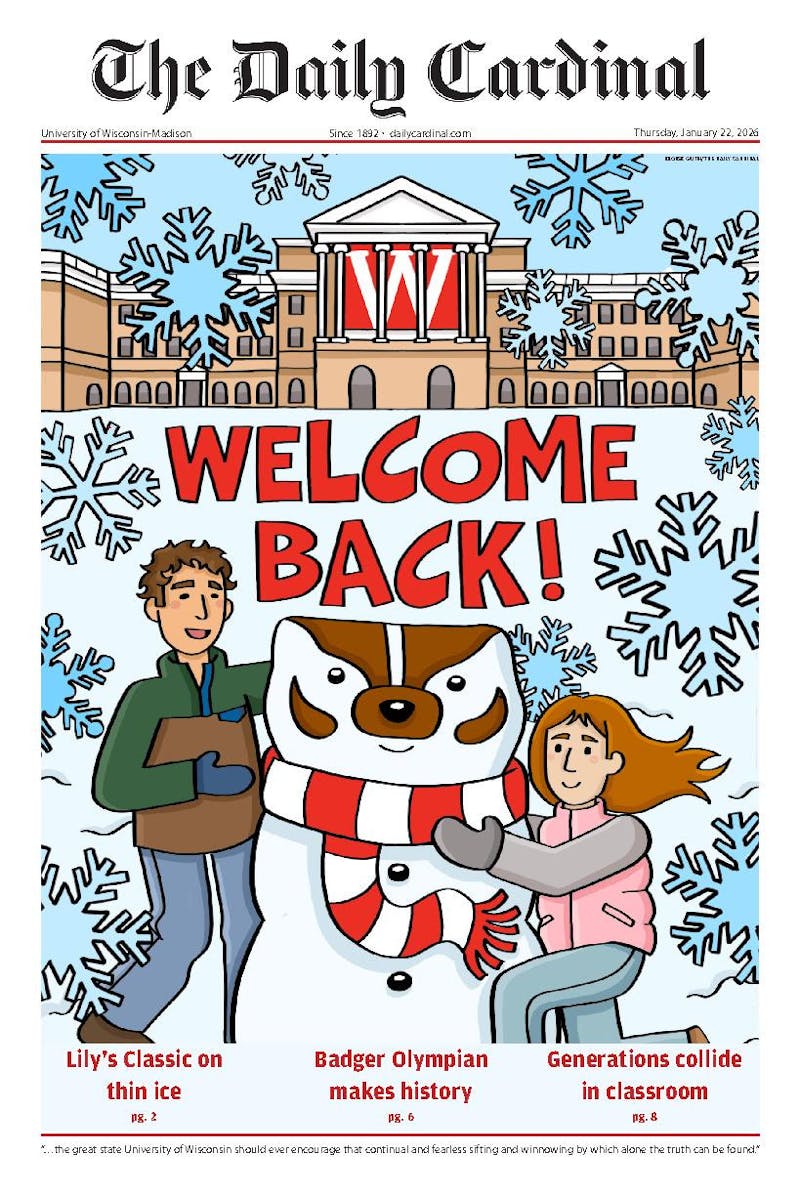When current Madison Mayor Paul Soglin was an alderman in the early 1970s, he supported a proposal to convert State Street into the pedestrian mall it is today, a plan that was vetoed by his predecessor William Dyke because he “feared it would turn the street into a hippie haven,” according to a 1974 TIME Magazine article.
After succeeding Dyke as mayor and conducting studies on everything from traffic patterns to public opinion, Soglin renewed his efforts to turn the State Street pedestrian mall into a reality, and in 1974, construction began on the $15 million project Soglin called “an economic success.”
Soglin, now serving his third tenure as mayor, has seen State Street evolve into the heart of downtown Madison and a bustling center of arts, dining, community and retail.
According to the Overture Center for the Performing Arts’ website, one of Soglin’s goals for State Street was to promote performance arts venues in Madison, and perhaps no story represents this evolution like that of the 200 block’s Overture Center.
According to spokesperson Rob Chappell, the Overture’s story began in 1978 when the city, under Soglin’s leadership, created the Madison Civic Center by buying the historic Capitol Theatre and combining it with a new theater called the Playhouse.
In 1998, philanthropist Jerry Frautschi made several donations totaling $205 million to transform the site into the Overture Center. Today, the Overture Center is in a top-tier Broadway market and brings 400,000 people and almost $10 million in downtown spending to Madison every year, according to the center’s website.
The Overture also focuses on local efforts. Through subsidies for groups including the Madison Ballet and Madison Chamber Orchestra, and resources for grassroots arts organizations and children’s programming, Chappell said the Overture Center is continuously working to improve the culture of the Madison community.
“We’re trying to create a culture of creativity and artistic engagement for the future,” Chappell said. “Those little kids are getting used to performing arts being part of their life so when they’re adults they can become our next generation of patrons of the arts and maybe even our next generation of artists.”
For Soglin, another unexpected effect of State Street’s growth is noticeable in the food scene.
“A big change came when a significant number of the restaurants added the outdoor cafes,” Soglin said. “It’s encouraged people to spend more time on State Street, it’s extended the hours of the street into the evening, and it’s made the street more diverse.”
According to Ald. Mike Verveer, District 4, many of the changes the city has made to State Street over the years have been routine. Since 2000, he said, the city has been reconstructing the sidewalk and street space of State Street one block at a time and will finish in 2014 with the reconstruction of the 700 and 800 blocks near Library Mall.
But some changes currently taking place on the street have been much more drastic.
Verveer said the development of the “Hub,” a student-oriented housing project that would replace the University Inn and other buildings on the 500 block, has been controversial because of the Madison Trust for Historic Preservation’s concerns that it would sacrifice historic buildings such as the one that houses Roast Public House. But Verveer predicts the project will be approved when it goes to the city Council Aug. 6 and will be open for occupancy by August 2014.
Historical interests have also been raised about the extensive renovations on the 100 block of State Street currently being implemented by the Block 100 Foundation, a private nonprofit organization created by philanthropists Jerry and Pleasant Frautschi.
According to project manager George Austin, the purpose of the renovation of six properties on the block including two historical landmarks, is to create street presence across from the Overture Center on North Fairchild Street, with entries into the buildings on the block that is currently inactive.
“We’re respecting the historical architectural character of the street,” Austin said. “And really, the most important thing you can do is add more activity and create a street that is lively, that people want to be on and that feels safe, which is an important city objective.”
Soglin agreed the new construction will not be a threat to State Street’s character.
“I think that the new construction will respect State Street as we know it,” he said.
Although State Street’s history may occasionally clash with developmental progress, the result is an active thoroughfare that embodies the spirit of Madison.
When it comes to finding this balance, Verveer said, “I like the best of both worlds. There’s always been this tension … between new development and historic preservation. The city’s zoning code and downtown plan have very special specific recommendations for State Street that err on the side of preserving the historic character and walkability of the street.”






